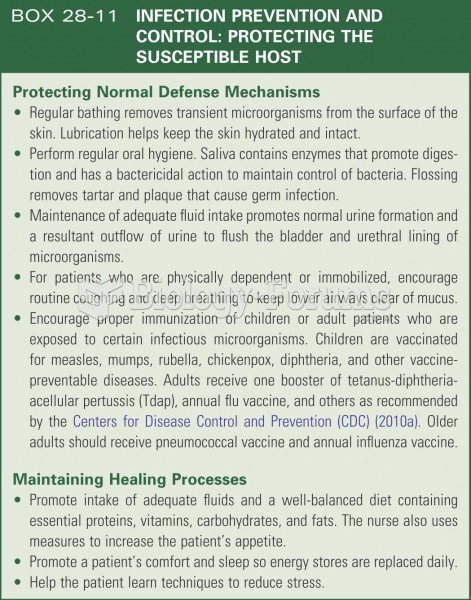Answer to Question 1
Answer: 1
Explanation: 1. The natural history of a condition is often divided into four stages: susceptibility, preclinical, clinical, and resolution. In the susceptibility stage, factors contributing to development of the condition are present and the person is at-risk for its development. When exposure to causative factors has occurred, but no symptoms have appeared, the condition is in the preclinical stage. The clinical stage begins with the onset of signs and symptoms characteristic of the disease or condition. In the resolution stage, the condition culminates in a return to health, death, or continuation in a chronic state.
Answer to Question 2
Answer: 1, 2, 4, 5
Explanation: 1. Determining a condition's natural history involves identifying factors that contribute to its development, typical signs and symptoms of the condition, its effects on the human system, and its typical outcomes and factors that may affect those outcomes. The length of time the health problem will affect the body is not a factor when determining a condition's natural history.
2. Determining a condition's natural history involves identifying factors that contribute to its development, typical signs and symptoms of the condition, its effects on the human system, and its typical outcomes and factors that may affect those outcomes. The length of time the health problem will affect the body is not a factor when determining a condition's natural history.
4. Determining a condition's natural history involves identifying factors that contribute to its development, typical signs and symptoms of the condition, its effects on the human system, and its typical outcomes and factors that may affect those outcomes. The length of time the health problem will affect the body is not a factor when determining a condition's natural history.
5. Determining a condition's natural history involves identifying factors that contribute to its development, typical signs and symptoms of the condition, its effects on the human system, and its typical outcomes and factors that may affect those outcomes. The length of time the health problem will affect the body is not a factor when determining a condition's natural history.







